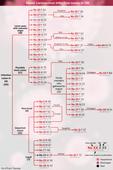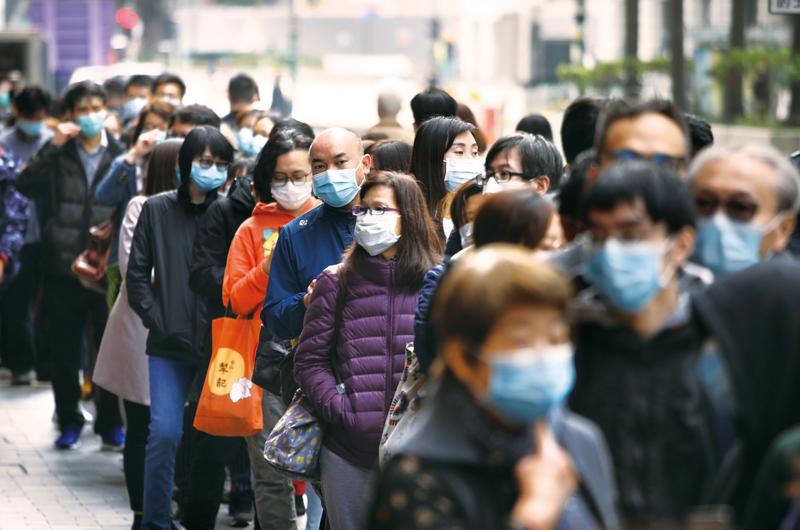 Hong Kong residents form a long line outside a drugstore in Tsim Sha Tsui on Feb 3 to buy face masks as a precaution against the novel coronavirus. (CALVIN NG / CHINA DAILY)
Hong Kong residents form a long line outside a drugstore in Tsim Sha Tsui on Feb 3 to buy face masks as a precaution against the novel coronavirus. (CALVIN NG / CHINA DAILY)
The epidemic control of coronavirus diseases (COVID-19) in Hong Kong is at its most critical stage, the government and experts have repeatedly stressed. As of Wednesday, 50 patients had been confirmed infected and one man died in hospital. In an effort to reduce importation of the virus, the government has gradually tightened the entry restrictions and eventually required all arrivals from the mainland to undergo a 14-day mandatory quarantine at home or designated places.
The city’s health resources faced another challenge when over 4,000 hospital workers went on a five-day strike last Monday calling for a total lockdown of the city. The industrial action added a tremendous burden to public hospitals, causing a large number of scheduled surgeries, including cesarean sections, to be postponed and forcing the public hospitals to run at limited resources in many disciplines.
 A man is transferred to the Princess Margaret Hospital on Jan 22 for treatment and quarantine. He was later confirmed to be the first infected patient of the novel coronavirus in Hong Kong. (PHOTO PROVIDED TO CHINA DAILY)
A man is transferred to the Princess Margaret Hospital on Jan 22 for treatment and quarantine. He was later confirmed to be the first infected patient of the novel coronavirus in Hong Kong. (PHOTO PROVIDED TO CHINA DAILY)
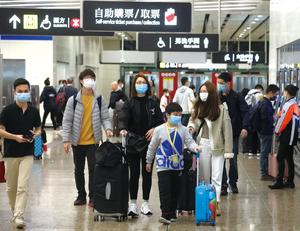 Passengers wearing surgical masks arrive at the West Kowloon highspeed rail station on Jan 23. (CALVIN NG / CHINA DAILY)
Passengers wearing surgical masks arrive at the West Kowloon highspeed rail station on Jan 23. (CALVIN NG / CHINA DAILY)
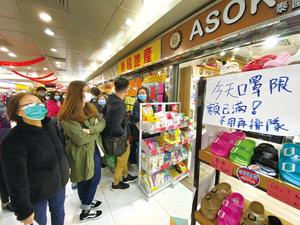 Customers who hoped to buy face masks crowd outside a Tai Po store that sells Thai goods on Jan 29. The store’s sign says that the store has already sold its quota of masks for the day. (EDMOND TANG / CHINA DAILY)
Customers who hoped to buy face masks crowd outside a Tai Po store that sells Thai goods on Jan 29. The store’s sign says that the store has already sold its quota of masks for the day. (EDMOND TANG / CHINA DAILY)
Hong Kong authorities called on members of the public not to panic, as the coronavirus continues to spread.
Hong Kong microbiologist Yuen Kwok-yung said it’s unlikely there will be massive transmission of the disease throughout the community.
At the same time, the public is advised to stay at home as much as possible, and to avoid gatherings. Eleven members of one family were diagnosed with the virus after a family gathering of 19 people on Jan 26. Two confirmed cases were identified on different floors of a residential building in Tsing Yi. The discovery prompted evacuation of the building, involving some 200 tenants on Tuesday. Experts suspect the virus was transmitted through an altered exhaust pipe that connected a toilet with the building’s sewage outlet.
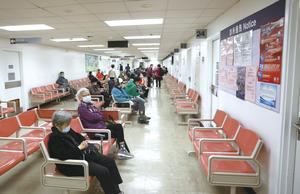 Patients wait to see the doctor at Queen Elizabeth Hospital in Jordan on Feb 4. The first patient to die from novel coronavirus in Hong Kong was treated in this hospital before being transferred to the Princess Margaret Hospital. (CALVIN NG / CHINA DAILY)
Patients wait to see the doctor at Queen Elizabeth Hospital in Jordan on Feb 4. The first patient to die from novel coronavirus in Hong Kong was treated in this hospital before being transferred to the Princess Margaret Hospital. (CALVIN NG / CHINA DAILY)
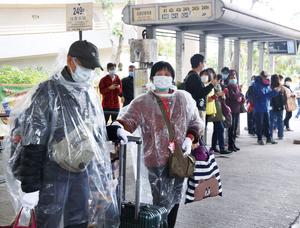 Residents in Hong Mei House gear up and leave their home on Tuesday after two of their neighbors were confirmed to be infected with the novel coronavirus. (EDMOND TANG / CHINA DAILY)
Residents in Hong Mei House gear up and leave their home on Tuesday after two of their neighbors were confirmed to be infected with the novel coronavirus. (EDMOND TANG / CHINA DAILY)
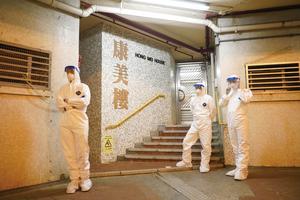 Staff in protective gear evacuate around 200 residents at Hong Mei House in Tsing Yi on Tuesday. (PHOTO PROVIDED TO CHINA DAILY)
Staff in protective gear evacuate around 200 residents at Hong Mei House in Tsing Yi on Tuesday. (PHOTO PROVIDED TO CHINA DAILY)
HK tightens up measures to contain the spread of coronavirus
Jan 25
Require arrivals via all immigration checkpoints to report health conditions
Jan 26
Extend the Spring Festival break for non-tertiary students to Feb 17
Suspend all flights and rail services between Wuhan
Jan 30
Close six immigration checkpoints at the boundary with the mainland
Suspend services of the Hong Kong section of the Guangzhou-Shenzhen-Hong Kong Express Rail Link and the Intercity Through Train
Jan 31
Further extend the holiday for non-tertiary students to March 2
Require civil servants to work from home until Feb 9
Feb 3
Require Hong Kong residents returning from Hubei province to wear smart wristbands to monitor their whereabouts
Feb 4
Close all but four border crossings including Shenzhen Bay Port and the Hong Kong-Zhuhai-Macao Bridge, the only two remaining immigration checkpoints with the mainland
Feb 7
Extend the arrangement for civil servants to work from home to Feb 16
Feb 8
Require all arrivals who visited the mainland in the past two weeks, including Hong Kong residents, to be quarantined for 14 days
